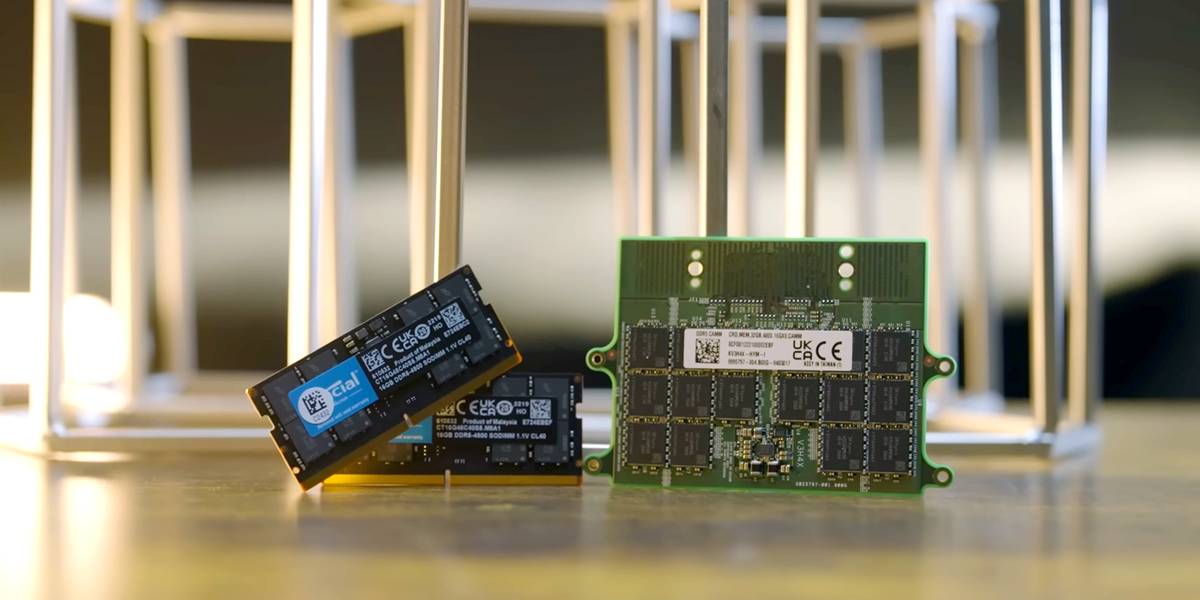CAMM Memory vs DDR5: Which is Faster? the technology industry is always evolving, and as devices become more powerful and compact, so does the memory technology that powers them. Two of the most prominent memory types in today’s market are CAMM Memory and DDR5. Both are designed to provide faster speeds, greater bandwidth, and increased efficiency, but how do they compare against each other? Which one leads the way in terms of speed? In this article, we’ll delve deep into the differences between CAMM Memory vs DDR5 and explore their individual strengths and weaknesses.

Understanding CAMM Memory
CAMM Memory stands for Compression Attached Memory Module, a relatively new player in the world of memory technologies. Designed as an alternative to traditional memory form factors like DIMM (Dual Inline Memory Module), CAMM Memory was created to address some of the challenges posed by modern computing systems, particularly in terms of space and heat dissipation.
What makes CAMM Memory stand out is its compact design. Unlike traditional memory modules, CAMM is engineered to fit in slimmer, more space-constrained devices, such as ultrabooks, gaming laptops, and small form factor servers. This design choice allows manufacturers to provide users with powerful systems while keeping the overall device size to a minimum.
Another important advantage of CAMM Memory is its advanced thermal management. As the demand for faster speeds and more powerful systems increases, the heat generated by memory modules becomes an issue that can hinder performance and cause instability. CAMM Memory modules address this concern with innovative cooling systems that dissipate heat more efficiently than traditional memory modules, ensuring stable performance even under heavy workloads.
Advantages of CAMM Memory:
- Space Efficiency: CAMM Memory modules are smaller and more compact, making them ideal for devices where space is at a premium.
- Thermal Management: The advanced cooling design of CAMM Memory ensures efficient heat dissipation, maintaining performance even in demanding situations.
- Faster Boot Times: The streamlined design allows for quicker boot-up speeds, especially on compact systems like ultrabooks.
Understanding DDR5 Memory
In the other corner of the ring is DDR5, the fifth generation of the popular DDR (Double Data Rate) memory technology. DDR5 brings several improvements over its predecessor, DDR4, including increased data transfer rates, higher memory density, and enhanced power efficiency. As one of the most popular memory standards, DDR5 is used in a wide range of devices, from high-performance gaming PCs to enterprise-level servers.
What sets DDR5 apart is its blazing-fast speed and bandwidth capabilities. It can deliver transfer speeds ranging from 4800 MT/s to 8400 MT/s, with higher speeds expected as the technology matures. This makes DDR5 the go-to choice for users who require top-tier performance for gaming, video editing, data analysis, and other memory-intensive tasks.
In addition to speed, DDR5 also offers increased capacity, with modules supporting up to 64GB per stick, compared to the 16GB to 32GB supported by DDR4. This means that systems using DDR5 can handle more demanding workloads and run more applications simultaneously without performance degradation.
Advantages of DDR5 Memory:
- High-Speed Performance: With speeds of up to 8400 MT/s, DDR5 offers incredible performance for high-demand applications.
- Increased Bandwidth: DDR5 doubles the bandwidth of DDR4, which improves overall system responsiveness.
- Larger Capacity: With modules supporting up to 64GB, DDR5 enables systems to handle more memory-intensive tasks.
- Future-Proof: As more devices and applications demand faster memory, DDR5 will continue to be the top choice for performance-driven systems.
Speed Comparison: CAMM Memory vs DDR5
When it comes to raw speed, DDR5 clearly takes the lead. With transfer speeds of up to 8400 MT/s, DDR5 is designed for high-performance computing applications, providing significant boosts to system responsiveness and task execution. If speed is the primary concern, DDR5 is currently the superior choice.
However, CAMM Memory isn’t far behind. While CAMM is more focused on efficiency, size, and thermal management, its speed is still impressive, especially for compact systems. CAMM Memory modules can achieve respectable speeds, but they are not as fast as DDR5 when it comes to raw performance. Still, CAMM Memory excels in devices where space and heat dissipation are more important than top-tier speeds.
Performance in Real-World Applications
- Gaming: If you’re a gamer looking for the best possible performance in terms of frame rates and loading times, DDR5 is the ideal choice. Its higher bandwidth allows for quicker data access, making it perfect for high-end gaming rigs.
- Productivity: For professionals working in creative fields like video editing, 3D rendering, and software development, DDR5 will provide smoother multitasking and faster rendering times.
- Compact Devices: For ultrabooks and portable laptops, CAMM Memory shines. It offers a great balance between performance and power efficiency while ensuring that your device stays cool and thin. If you’re building a slim, efficient laptop or a compact desktop system, CAMM Memory is an excellent choice.
Which One Is Better for Your Needs?
The decision between CAMM Memory vs DDR5 depends on your specific needs and the type of system you’re building or upgrading.
- Choose CAMM Memory if you’re building a compact device like an ultrabook, a gaming laptop, or a small form factor desktop where space and heat management are paramount. CAMM Memory will help keep the device slim while still delivering reliable performance.
- Choose DDR5 if you need extreme performance for gaming, video editing, or any other data-intensive applications. DDR5 offers superior speed and bandwidth, making it the clear choice for high-performance systems.
In the battle of CAMM Memory vs DDR5, there is no clear winner because they cater to different needs and use cases. If you’re after raw speed and power for tasks that demand the highest levels of performance, DDR5 is the right choice. On the other hand, if you’re looking for a space-efficient, thermally optimized memory solution for portable and compact devices, CAMM Memory is the superior option.
Ultimately, both CAMM Memory and DDR5 have their strengths, and the right choice depends on what’s most important to you—whether it’s speed, efficiency, or form factor.




